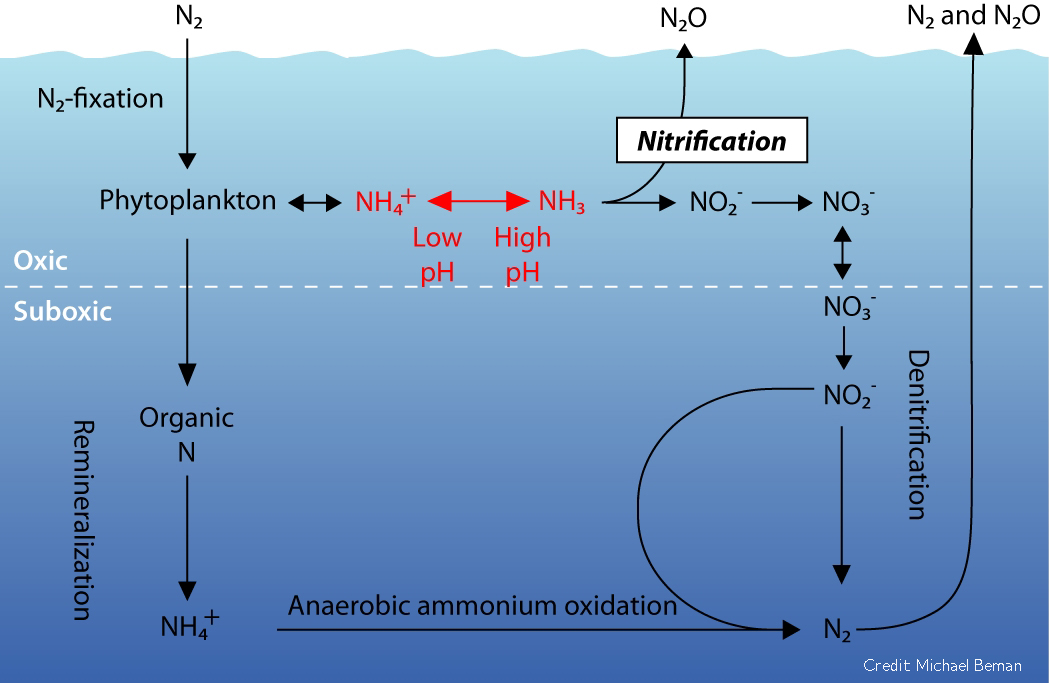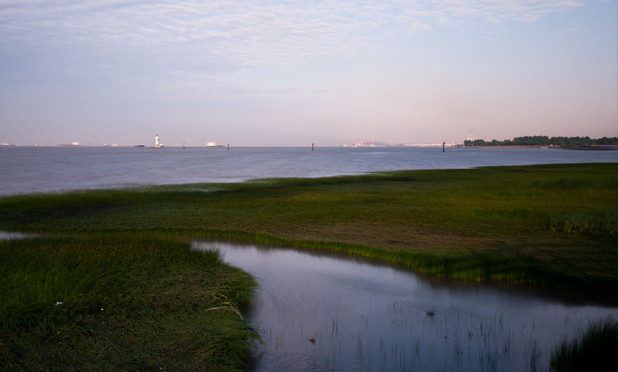Understanding how ocean acidification can change nitrogen cycling is critical to determining future impacts. Waters with lower pH can change what chemical reactions take place, and to date, there has been little information about how it will change complex nitrogen processes. Nitrogen cycling is critical to our coastal waters, oceans, and the planet's health. New research into the trickle-down impact of increased carbon dioxide in the atmosphere indicates that a positive feedback loop will likely occur. An international team of chemists, including Dr. Zhanfei Liu, a professor at The University of Texas Marine Science Institute, conducted several field and laboratory experiments to determine how ocean acidification affects nitrification processes and nitrous oxide emissions in estuarine and coastal waters. The study shows that acidification of coastal waters can inhibit the rate of nitrification, a critical step in nitrogen cycling, while promoting the production of nitrous oxide, a potent greenhouse gas. The research findings, published in Nature Communications, provide important scientific support for evaluating and predicting the response and feedback of complex estuarine and coastal ecosystems to climate change and human activities.
 It is important that the researchers conduct the experiments in coastal systems because these areas are subject to higher amounts of acidification and receive large amounts of nitrogen nutrients from their watersheds. Even though water acidification in estuarine and coastal areas is the fastest and most severe, the resulting biogeochemical effects and climate feedback still need to be clarified. More information is required on the responses of nitrogen-transforming microorganisms, the impacts on nitrogen transformation rates, and nitrous oxide greenhouse gas production and emission.
It is important that the researchers conduct the experiments in coastal systems because these areas are subject to higher amounts of acidification and receive large amounts of nitrogen nutrients from their watersheds. Even though water acidification in estuarine and coastal areas is the fastest and most severe, the resulting biogeochemical effects and climate feedback still need to be clarified. More information is required on the responses of nitrogen-transforming microorganisms, the impacts on nitrogen transformation rates, and nitrous oxide greenhouse gas production and emission.
It is tough to fully understand how acidification affects nitrification because increasing CO2 and decreasing pH can have opposing effects on different parts of the nitrification process, which involves several different compounds (ammonia and ammonium). In addition, microbes that create those nitrogen compounds are all changing simultaneously. To get answers Liu and colleagues conducted several experiments to decouple the process of increasing CO2 and decreasing pH. The experiments were set up for long time periods to allow for enough turnover in the microbe assemblage to mimic real-world situations. To further elicit how nitrogen-transforming microorganisms will react to higher acidification, the researchers used metagenomics to determine what genes are involved and how those genes changed.
The most important question is what happens to nitrous oxide gas, N20, production when estuaries and other coastal zones become more acidic. While it represents a much smaller portion of greenhouse gases, nitrous oxide gas is over 300 times stronger in trapping heat than CO2 and small increases have a disproportionate impact. The researchers found that while the mechanisms for N2O production differed among nitrifying microbes, they demonstrated that both ammonia-oxidizing archaea and ammonia-oxidizing bacteria produced more N2O when stimulated by acidification. The metagenomics research also indicated that when faced with acidification stress, microbes may adjust gene expression, reducing the nitrification rate and increasing N2O production.
This study highlights nitrifying microbes' importance and their often overlooked role, especially in a future with more acidic coastal zones. This study proposes that further acidification in estuarine and coastal waters may alter the nitrogen cycle and accelerate global warming by stimulating N2O emissions.

The lead authors of the study were Jie Zhou and Yanling Zheng of East China Normal University, with coauthors: Lijun Hou, Zhirui An, Feiyang Chen, Bolin Liu, Li Wu, Lin Qi, Hongpo Dong, Ping Han, Guoyu Yin, Xia Liang, Yi Yang, Xiaofei Li, Dengzhou Gao, Min Liu, and Ye Li, from East China Normal University, Zhanfei Liu from The University of Texas Marine Science Institute and Richard Bellerby from Norwegian Institute for Water Research. The study was supported by the National Natural Science Foundation of China, the Chinese National Key Programs for Fundamental Research and Development, the Director’s Fund of Key Laboratory of Geographic Information Science, and East China Normal University.









